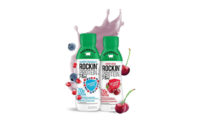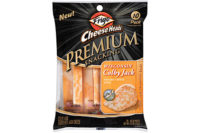Yogurt, specialty cheeses are top consumer trends

The food industry is feeling ripple effects from rising food and fuel prices, new benefit costs due to the 2010 Affordable Care Act, modest income growth following the 2013 payroll tax increase, and weak consumer confidence due to fiscal uncertainty. That’s according to “What’s in Store 2014,” an annual trends publication of the International Dairy-Deli-Bakery Association, Madison, Wis.
Price, convenience and health are now implicit in the fresh food value equation. Digital platforms and personalized promotions are encouraging the “de-averaging” trend. Showrooming, geo-fencing and price-matching are becoming more prominent in retail. “Channel surfing” is cutting grocery trips as shrinking household size cuts trip volume.
Transparency is critical as many shoppers, particularly younger ones, demand more information on food origins, ingredients, and nutritional content. Authenticity, fusions and regionalism are drawing strong consumer interest as bold new cuisines serve up a fresh cache of global flavors and ingredients.
A taste for specialty cheese
As consumer palates evolve, so does demand for specialty cheese and robust flavors. U.S. cheesemakers and retailers are embracing affinage to meet demand. Specialty cheese accounts for nearly two-thirds of deli cheese sales. Retailers seek to entice more sales by expanding their cheese sections and providing cheese mongers behind the case. Restaurant offerings influence cheese at retail as traditional foods from burgers to mac and cheese to grilled cheese go upscale with specialty cheeses, like Gouda, Brie, blue and goat.
Interest in Latin and Mediterranean cuisine is appearing in the cheese case as consumption of varieties like queso fresco, Cotija and feta rises. Millennials, dubbed the “cheese generation,” have had more exposure to specialty and artisan cheese varieties, developing more adventurous palates. This makes them ideal customers for authentic cheeses in convenient forms.
Dairy is one of the most frequently shopped grocery departments — 36 trips per year. New product introductions are robust at approximately 12,000 to 13,000 products annually. Yogurt shows strong growth trends. Sales projected to 2017 show an anticipated 17% growth (an estimated $9.1billion US). It’s a growing breakfast and snack category.
3 mega-trends affecting dairy
Three macro factors impacting the dairy case are: decreasing U.S. middle-income households, diversity of shoppers by age and ethnic group, and access to smart technologies (encouraging unprecedented levels of transparency).
Watch for dairy processors to boast protein content and treatment of health issues, messages about dairy’s nutrients beyond calcium and weight management, tout dairy as an excellent agent for prebiotics and probiotics, and stress satiety effects. Dairy to-go trends include products with longer shelf-lives, as well as occasion-specific desires (mid-morning snacks), and complete convenience (serving utensils included).
“What’s in Store 2014” is composed of six comprehensive chapters: State of the Industry, Consumer Lifestyles, Bakery, Cheese, Dairy and Deli. To order the report, visit iddba.org/wis.aspx.
— Contributed by IDDBA.
Looking for a reprint of this article?
From high-res PDFs to custom plaques, order your copy today!






